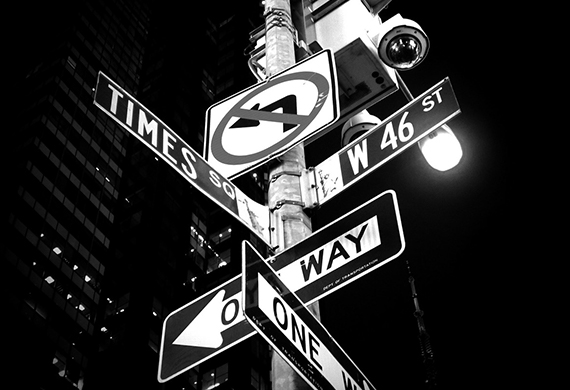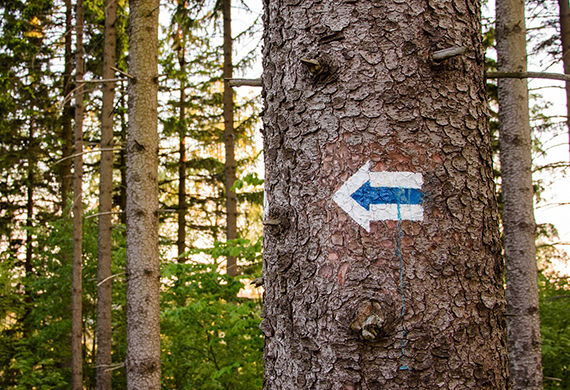Recent Posts
- Home
- Printing & Design Tips
- Types of Wayfinding Signs and Their Purpose
Types of Wayfinding Signs and Their Purpose
Posted by on
Prevent your visitors, guests, and shoppers from getting lost. Knowing where to order and how wayfinding signage helps people navigate locations will help you create and install proper signage.

clashgraphics.com gathered the following information about wayfinding signage, how different types of wayfinding signs interact, and why they are crucial to helping people safely reach their destinations.
What Does Wayfinding Mean?
The term wayfinding defines information systems (signage) that prompt, inform, and guide people through a physical environment while enhancing their understanding and experience of the location. These interconnecting information systems help people develop mental layouts of the terrain while simplifying their routes from origin to destination.

What Are The Principles of Wayfinding?
Ultimately, the desired outcome of a successful wayfinding campaign is for a person navigating your building, neighborhood, city, or state to be aware of his/her location, direction, and time/distance to their destination. The following principles (applied to road travel as an example) will help guide you to creating a highly optimized wayfinding program:
1. Location Identity - This principle speaks to the individuality or identifiability of specific locations. This is an aspect that establishes reference points or landmarks that become ways of positioning one’s self in a larger navigable space.
Example: Mile markers on a highway provide information about your immediate location and direction.
2. Use Landmarks for Location and Orientation Cues - Landmarks seen from a larger area or perspective help the individual attain a better perception of positioning, direction, and distance on a larger scale.

Example: Road/travel landmarks include architecturally significant buildings, water towers, bridges, etc.
3. Create well-signed And Structured Paths - Visual cues along interstate roadways accomplish this structure with signage like:
- “Atlanta (or other major destination) 200 miles” - meaning you are 200 miles from the stated destination.
- “Rest Area 5 miles” or “Next Rest Area 85 miles”
- “Welcome Center Next Right”
- Food, Lodging, and Gas signage announcing options at exits
- Speed limit signage
- Construction or work zone signage
Example: Billboards along a stretch of roadway are intended to convey information from a distance and can easily be used as directional landmarks (driving traffic to a specific location) within a larger region.
4. Give Each Region along a Path Its Own Characteristics - Cities or townships take on specific attributes that differentiate them from one another. Thus, contributing to a navigator’s positioning and wayfinding.

Example: Some cities may be known for their car dealerships, others may be known for their educational campuses, while others may be known for their cultural heritage or sightseeing appeal.
5. Keep Navigation Options To a Minimum - “All roads lead to Rome.” This saying means that all the methods of doing something will achieve the same result in the end. If your plan is to drive traffic to a specific attraction or location, design visual cues meant to attract navigators there.
Example: Post “Free Test-Drive,” “Buy One-Get One,” “50% off,” or other attractive marketing strategies. Some cities may guide traffic flow by making a series of one-way streets to force traffic towards a significant cultural attraction or economic driver.
6. Give Navigators a Map Reflecting the Path To Follow - Tourist maps are excellent examples of how to guide navigators. Perhaps most famous are the tourist maps found along “Historic US Route 66” stretching from Santa Monica, California to Chicago, Illinois.
Example: Visitors or Welcome centers along Route 66 offer tourist maps with historical information, sightseeing information, and offer navigators another positioning or directional cue.
7. Place Signage at Key or Decision Points That Promote Navigators Making Informed Decisions - Such wayfinding informational signage should be placed at locations where a navigator must make a directional decision. Such signage may warn of wildlife danger, rough roads, long delays, road work ahead, or other inconvenience that encourages using an alternate route.
Example: Most cities with a well-developed transit system use overhead digital signage to warn motorists of accidents, road closures, or other information that may interrupt or delay their commute.
8. Give Your Navigators More Extensive Insight - This principle provides a navigator with information on what awaits further along the path, often unfamiliar but potentially of interest. This wayfinding strategy may prompt the navigator to alter his/her destination. It relies on providing sufficient information to spark enough curiosity for the navigator to select that path.

Example: A sequence of billboards may announce the opening of an amusement park at Exit - 99, or your tourist map may announce the world’s tallest waterfall and campground just beyond the next city.
Note: While these principles used road travel to provide perspective, they can be similarly applied to any location or event in which people will move from one place to another. Such events include conventions, concerts, sports events, airports, and hospitals. Wayfinding is everywhere! From street signs to restroom signs, everyone is constantly being guided whether it’s noticed or not.
What Is The Difference Between Signage And Wayfinding?
While digital signage and wayfinding are more often reliant on each other than not. Wayfinding is any process that assists people find their way around, to, or from a location, while digital signage is a broader category that encompasses more than wayfinding technology.
Digital signage may be used to provide severe weather announcements, news headlines, or product promotions. While this may be valuable information, it does not provide location orientation (unless the sign itself is used as a landmark).
What Are The Different Types of Signs?
There are four distinct types of wayfinding signs, including identification, directional, informational, and regulatory. As individual signs, they attend to a specific role. However, as part of a wayfinding system, they work with each other to provide directional and positioning cues. Consider the following:
1. Identification Signs - This wayfinding signage is the most common and should be the most straightforward. Identification signage tells a person when they’ve arrived at their destination or if they’ve ended up in the wrong location. Some examples may include:
- Landmark (statues, historical markers, etc.)
- Department (Radiology, Sales, Accounting, etc.)
- Door ID Plates (General Manager, President, Conference Room, etc.)

2. Directional Signs - These signs act as cues to guide people from where they are to where they are going. These signs may be as simple as names with arrows at corridor junctions or as comprehensive as color-coded corridors leading to specific departments. Examples of these may include:
- Directory Signage (food court upper level, You Are Here, etc.)
- Color-coded corridors/lines (blue for accounting, yellow for marketing, etc.)
- Hanging product location signage (Bread, Condiments, Peanut Butter, Jelly, etc.)
3. Informational Signs - These signs serve to answer questions before they are asked. Such signage is often located in lobbies, waiting areas, and other areas exposed to people navigating to or reaching a destination. Informational signs include:
- Emergency Exits
- Restrooms
- Address Numbers or Placard
- Hours of Operation
- No Shoes, No Shirt, No Service
4. Regulatory Signs - Using clear and concise vocabulary, regulatory signage establish and reinforce rules and standards. This form of wayfinding signage generally focuses on safety and may include:
- No Smoking
- High Voltage
- Staff Only
- No Pets Allowed
- Face Coverings Required
These signs can be custom designed on aluminum, vinyl, or plastic in various colors and sizes; visit the link to order large format printing signage or to learn options and custom designs.

What Is a Wayfinding Strategy?
A comprehensive wayfinding strategy helps people depart a point of origin and navigate a path to a destination. The strategy seamlessly combines signage, maps, symbols, colors, and other forms of communication. As technological advancements become more available to the general population, wayfinding strategies integrate more mobile applications, RFID, QR code technology, and other wireless applications.
Wayfinding Signs and Cues
In this article, you discovered the principles of wayfinding, the types of signage it uses, and how all of it works together to accomplish people’s commutes and travels on any scale.
Having a well-designed and thought-out wayfinding system for your event, building, community, city, or state will help prevent confusion and frustration as people navigate from point A to point B.
Without wayfinding tools, you risk frustrating potential customers, losing valuable business, and dissuading tourists from visiting your location, all causing potentially significant revenue loss.
Sources:
ai.mit.edu/projects/infoarch/publications/mfoltz-thesis/node8.html
webservices.itcs.umich.edu/mediawiki/DigitalRhetoricCollaborative/index.php/Wayfinding
citeseerx.ist.psu.edu/viewdoc/download?doi=10.1.1.376.797&rep=rep1&type=pdf
http://www2.ca.uky.edu/agcomm/pubs/LA/LA4/LA4.pdf
Clash Graphics Print Shop Atlanta Flyer Printing
2233 Peachtree Rd NE Ste 202 Atlanta, GA 30309
(678) 235-3464

